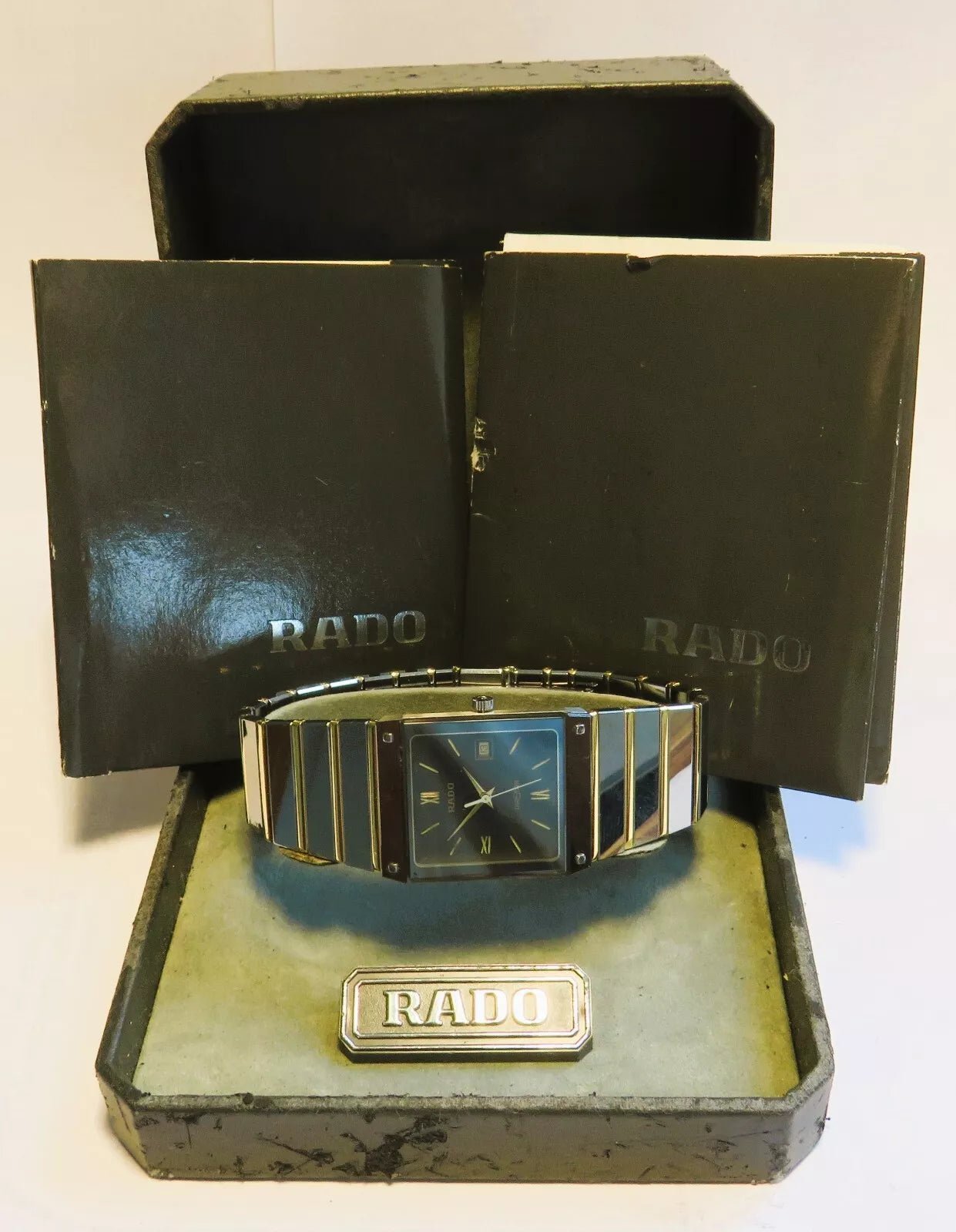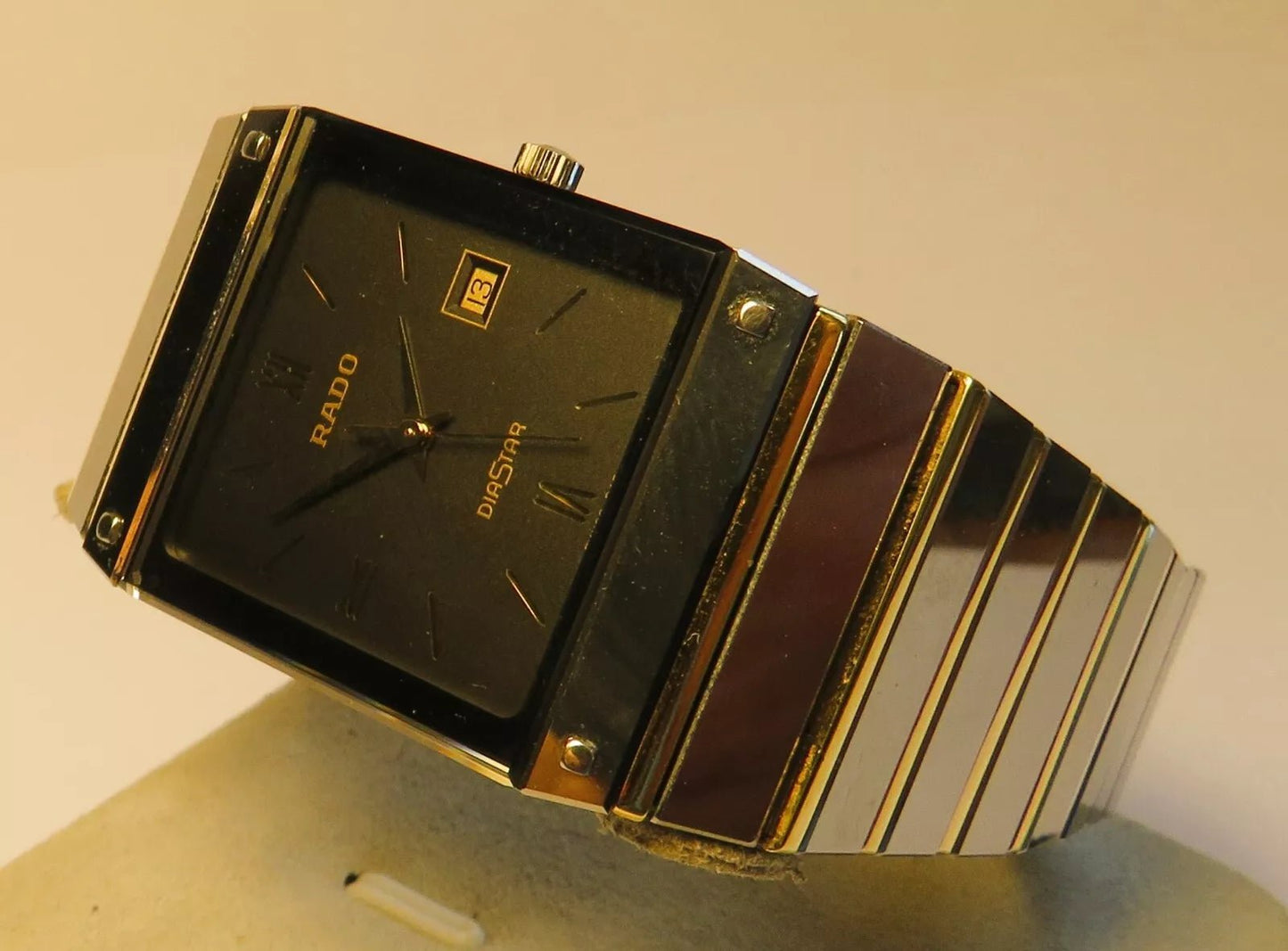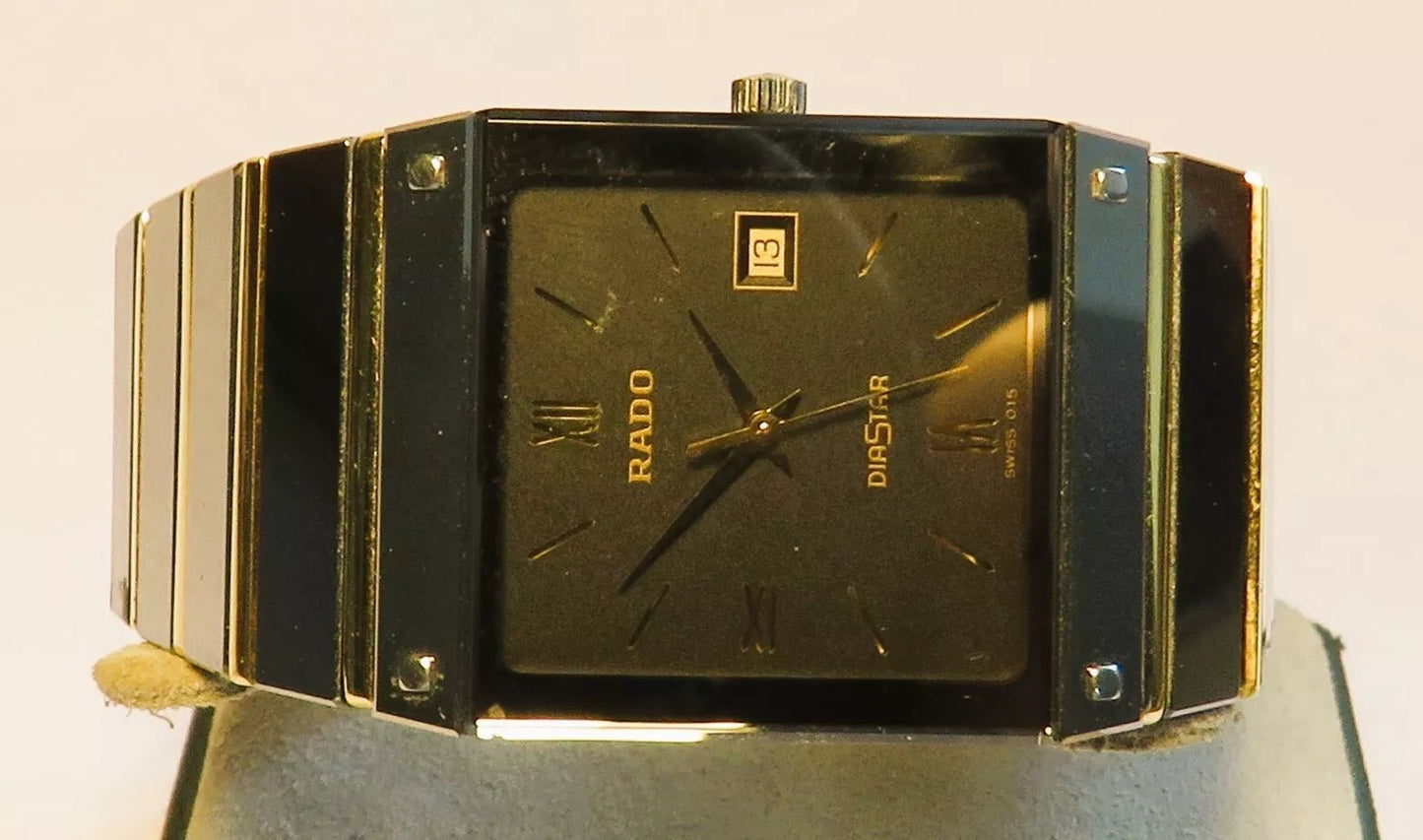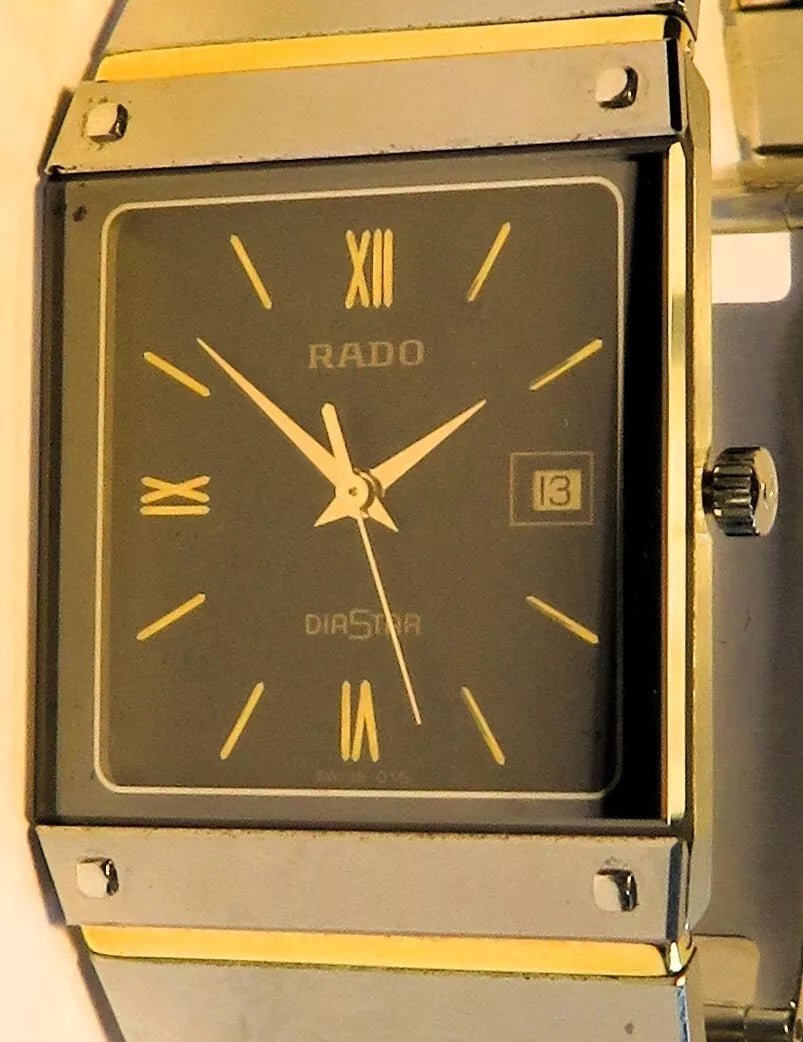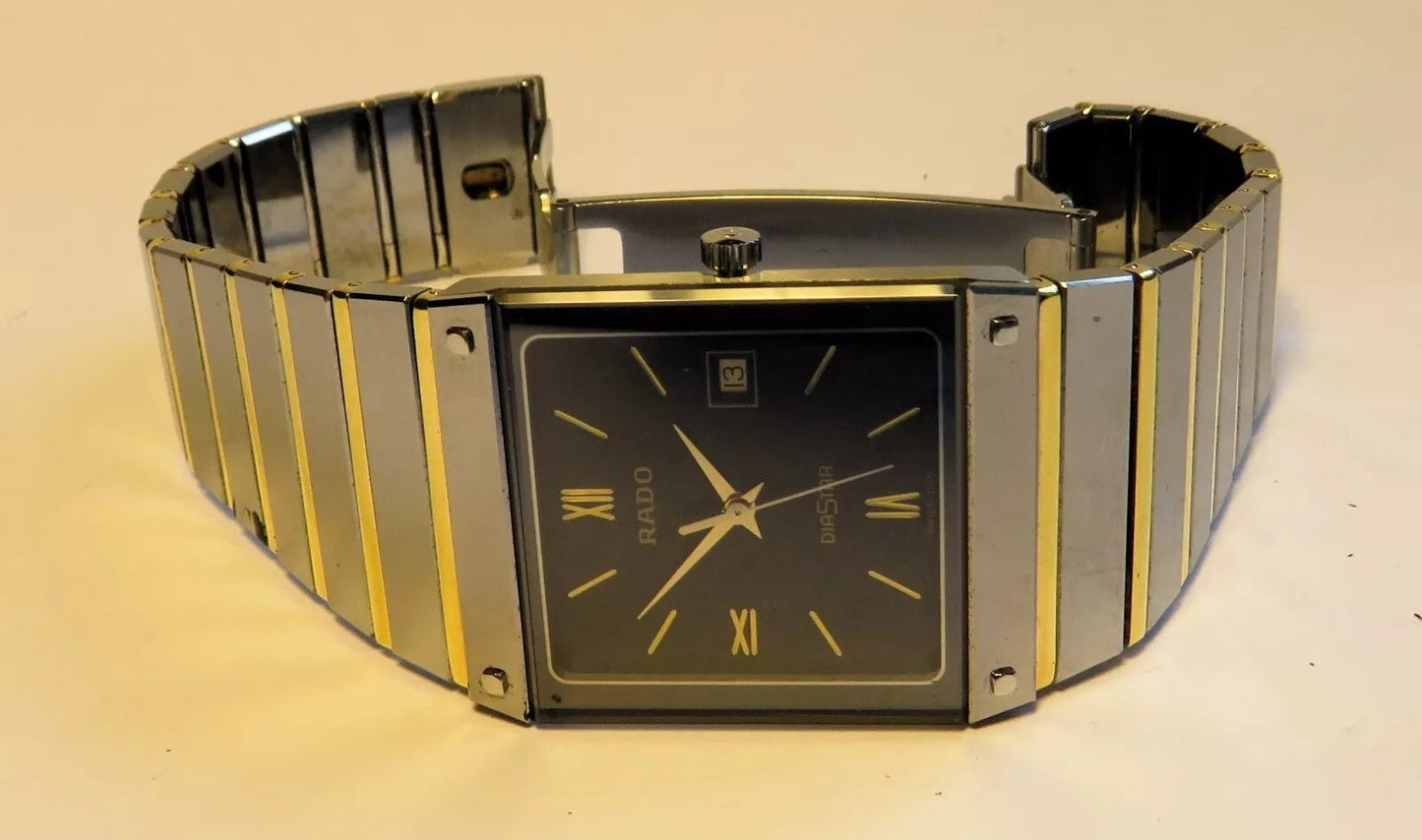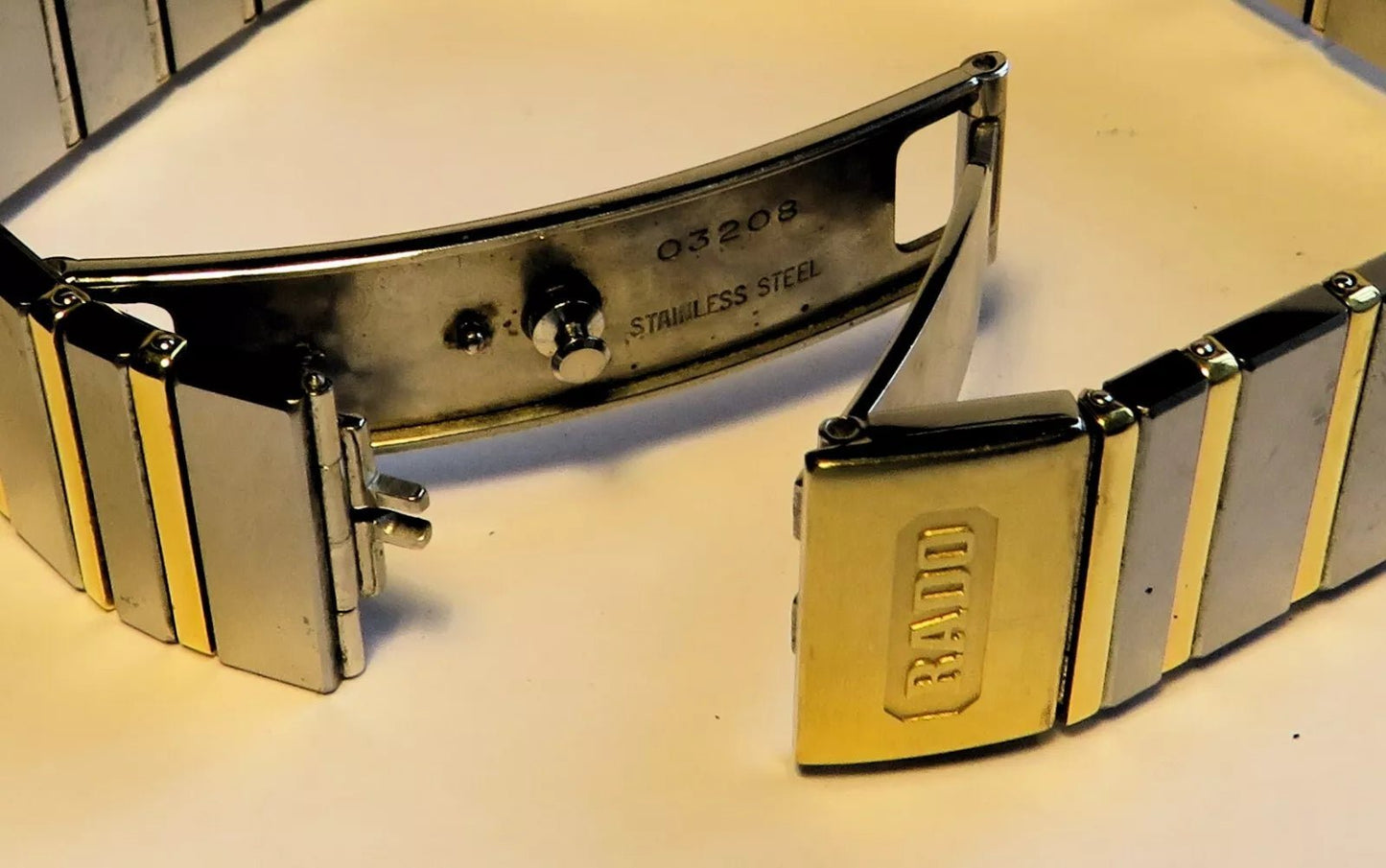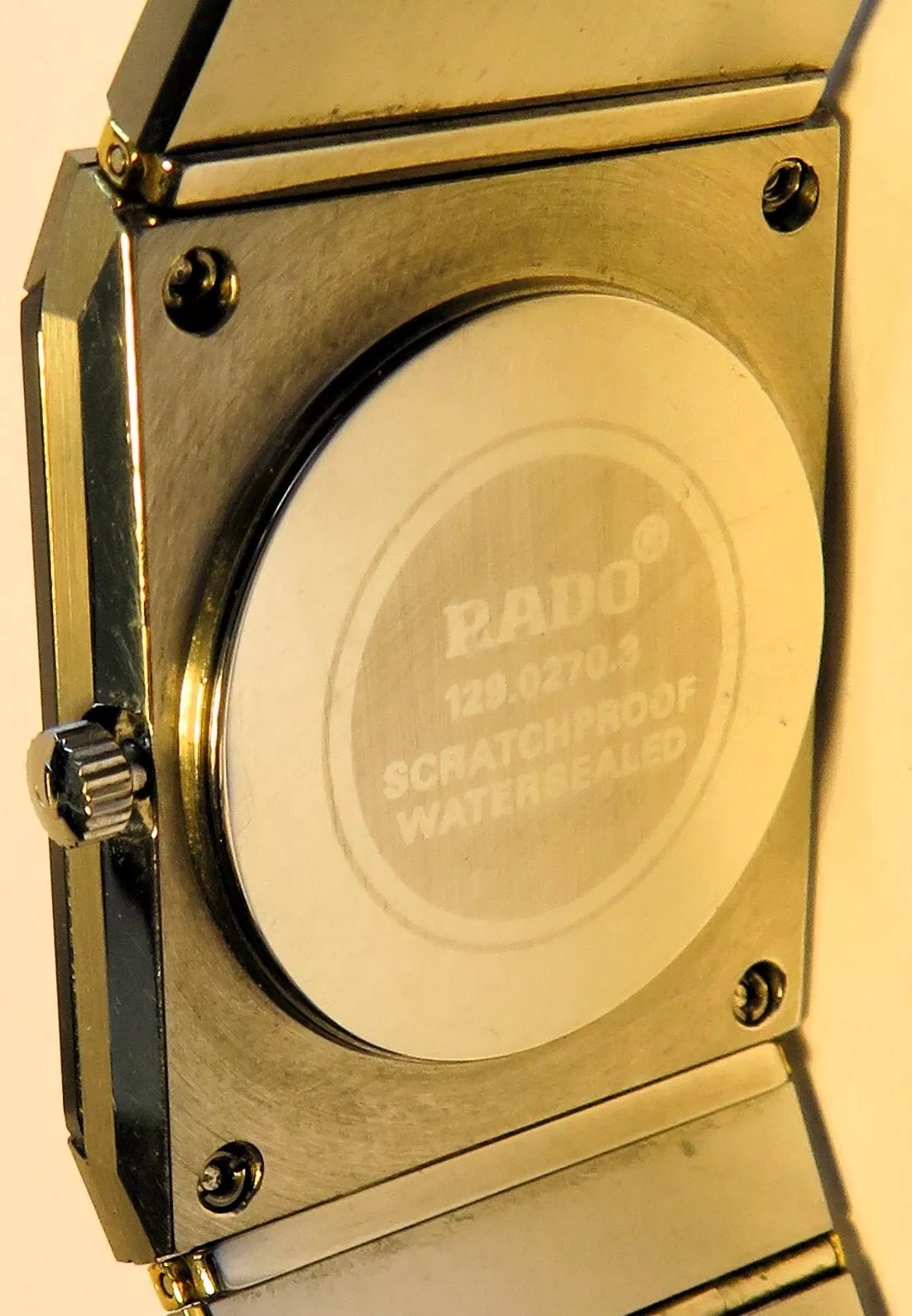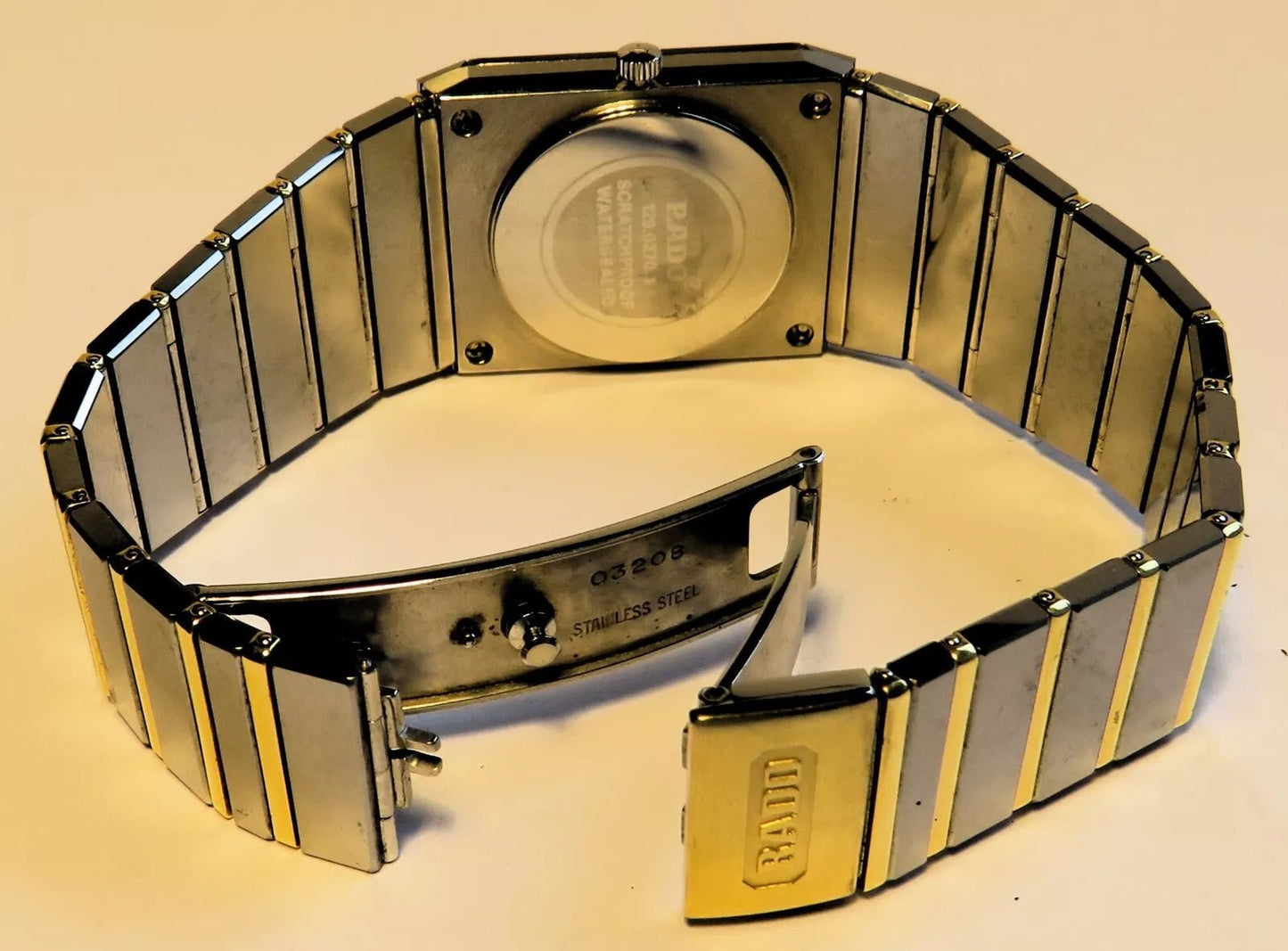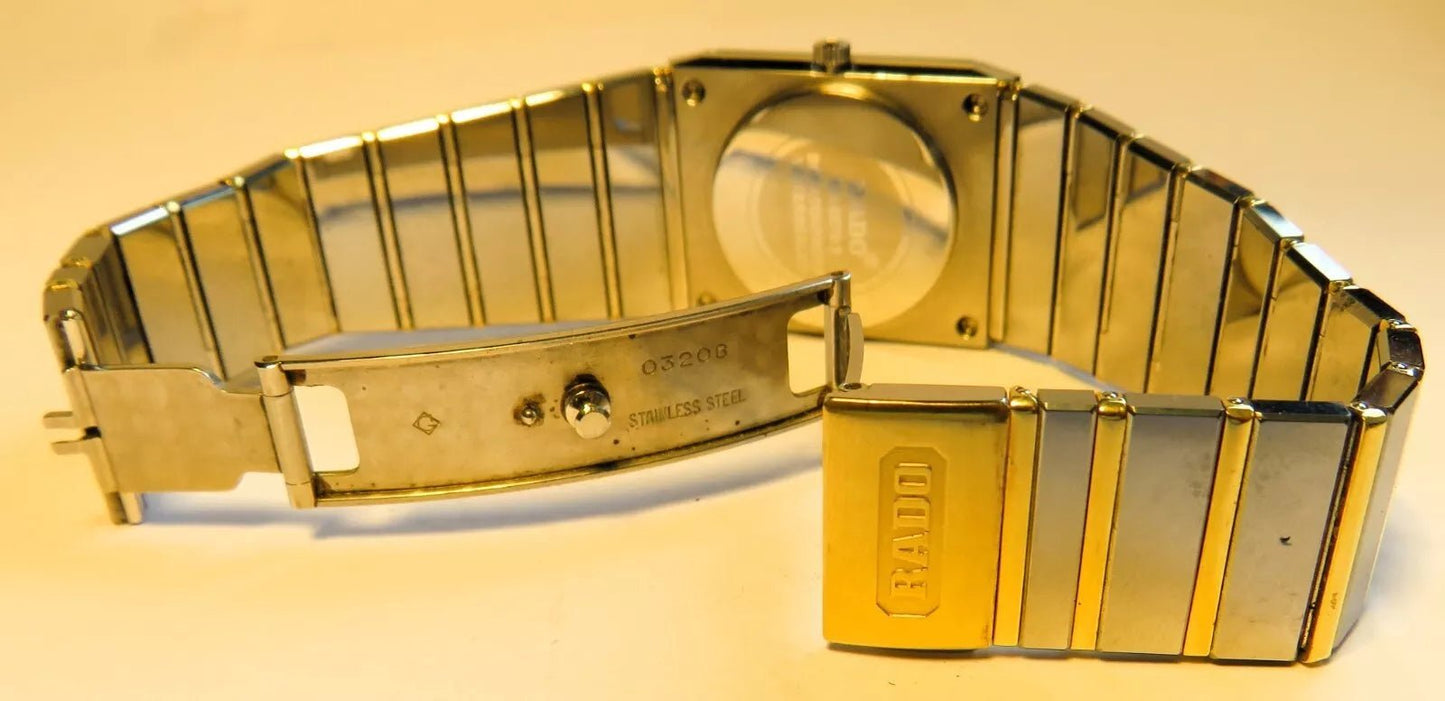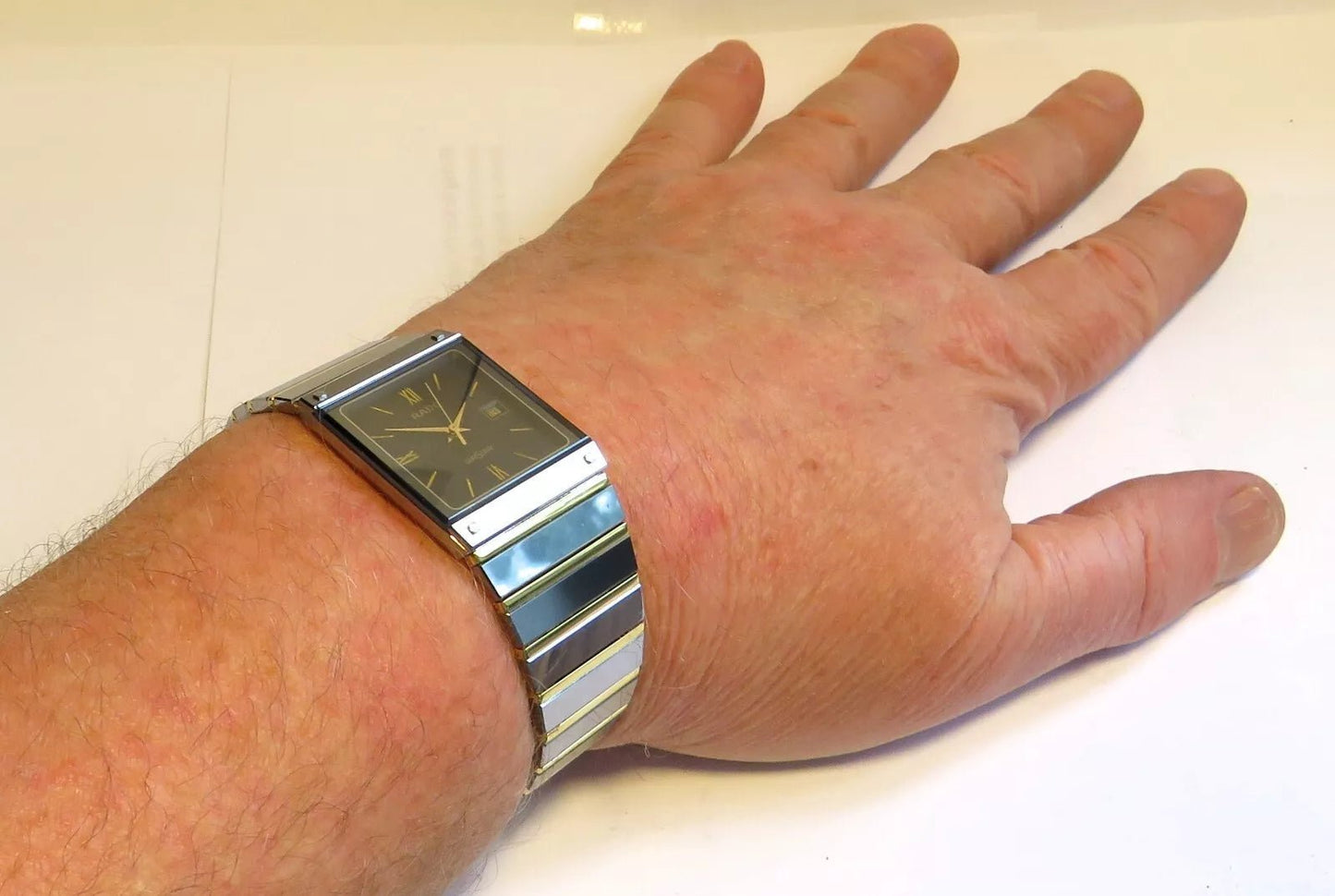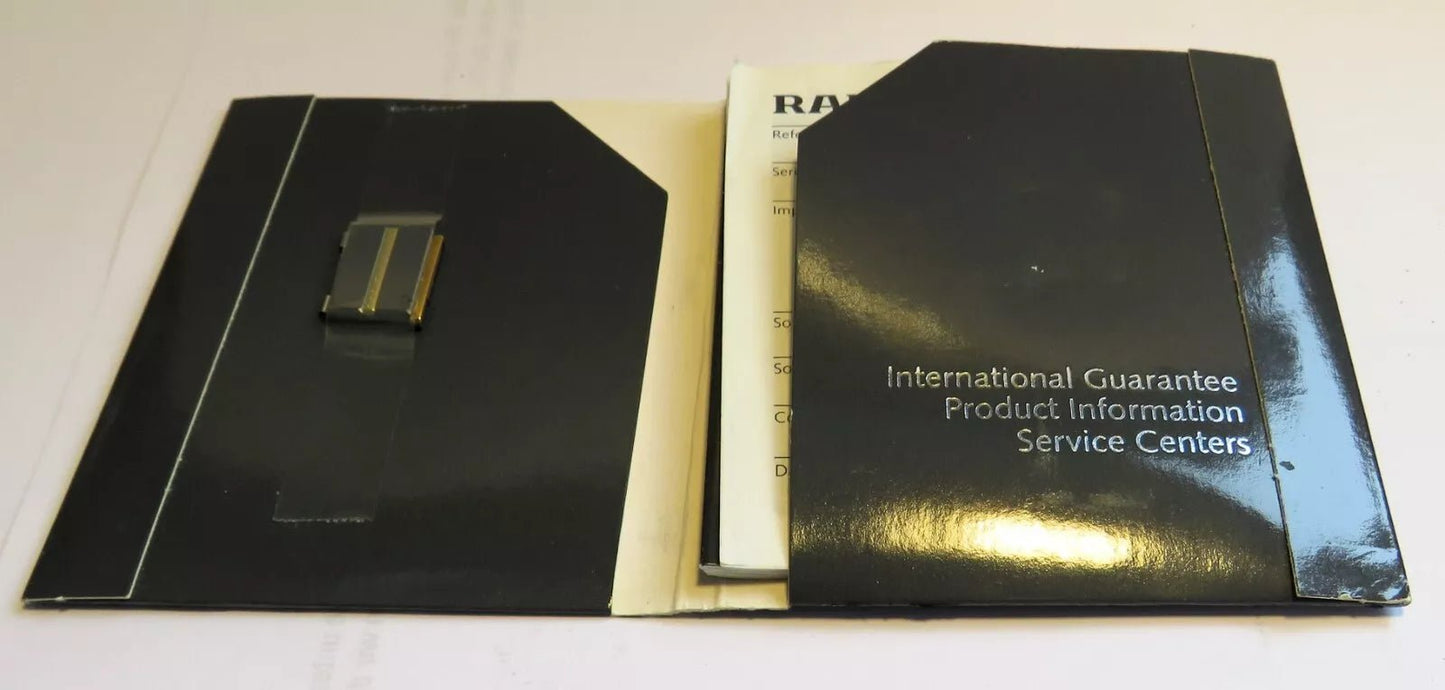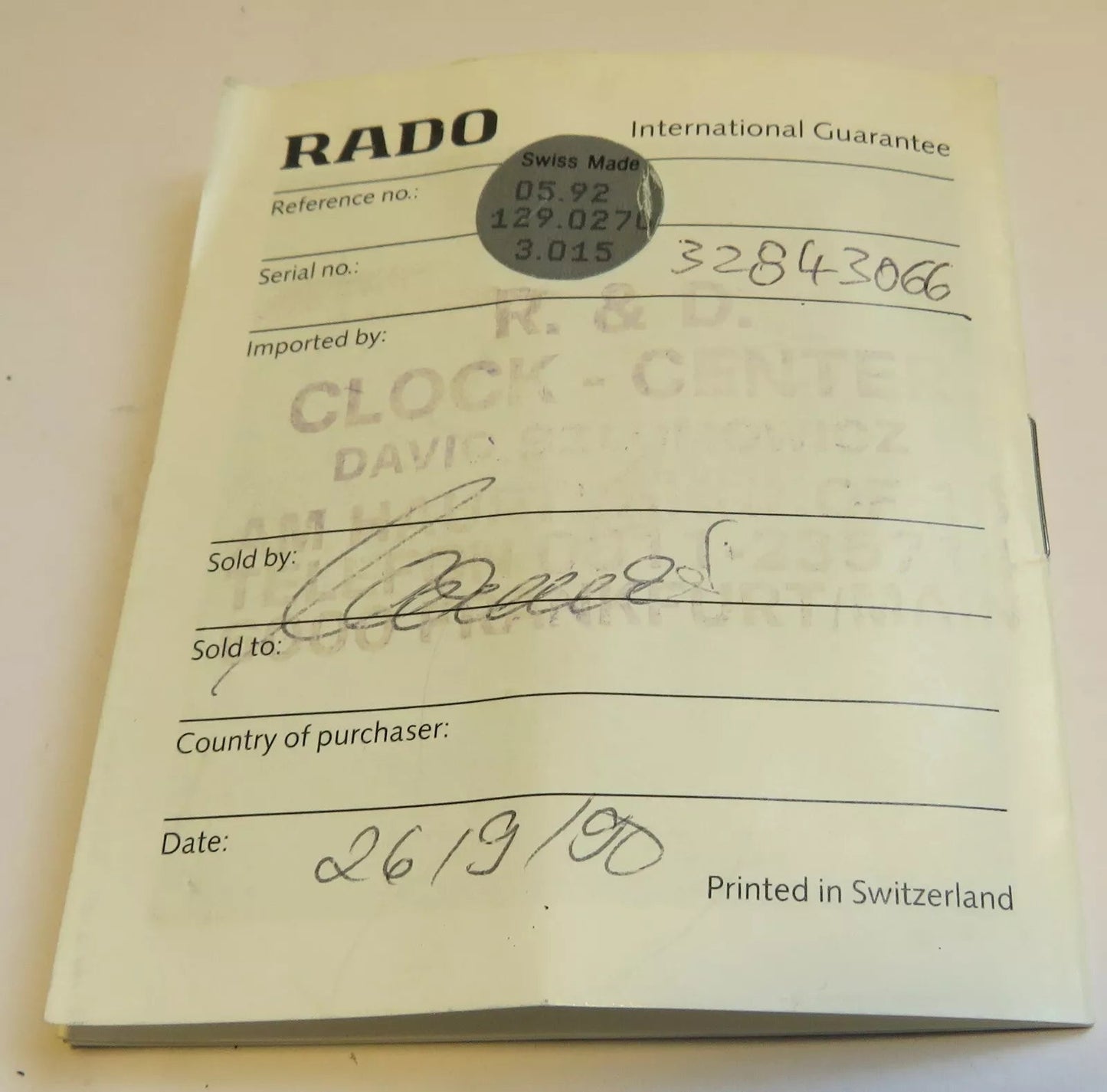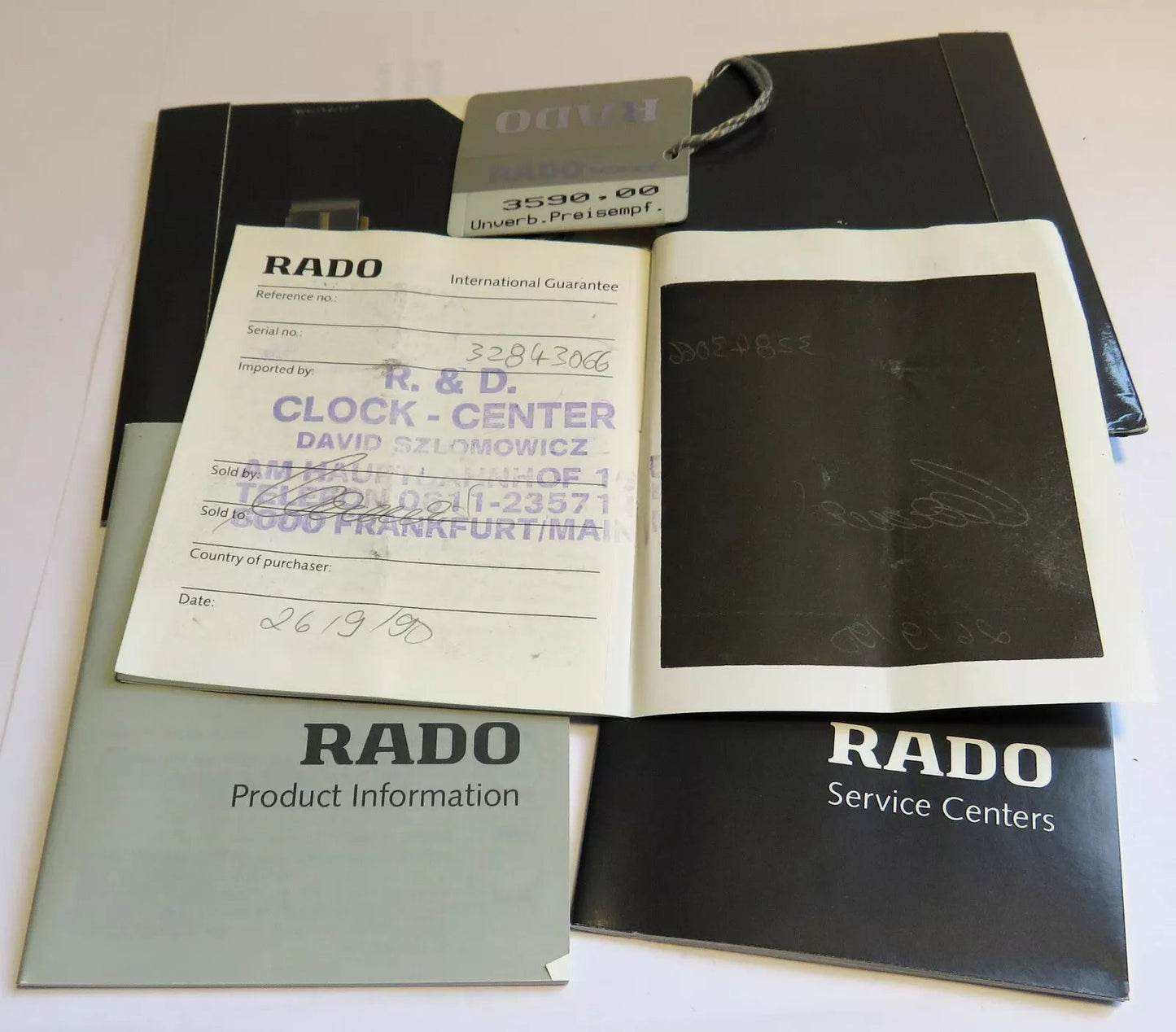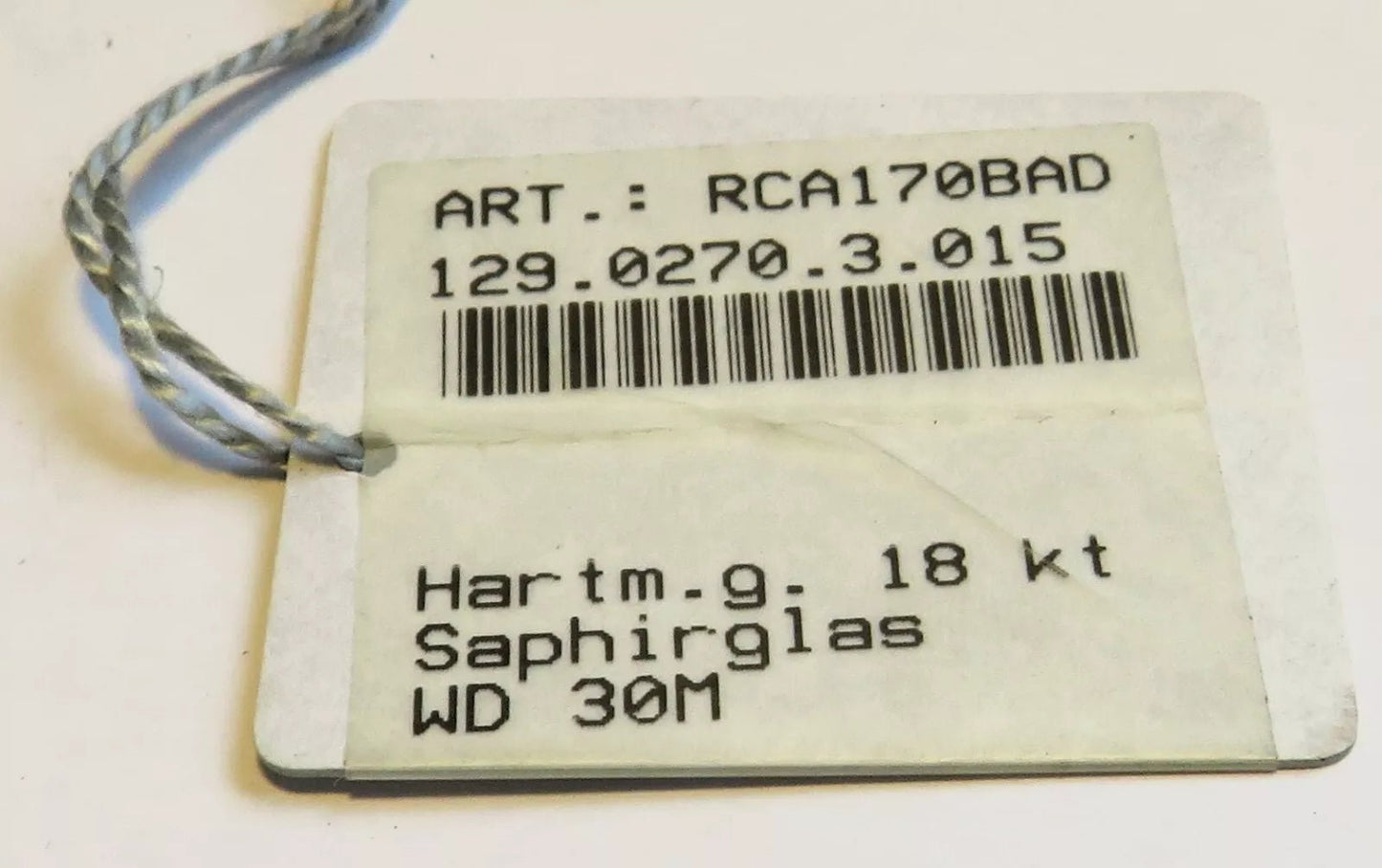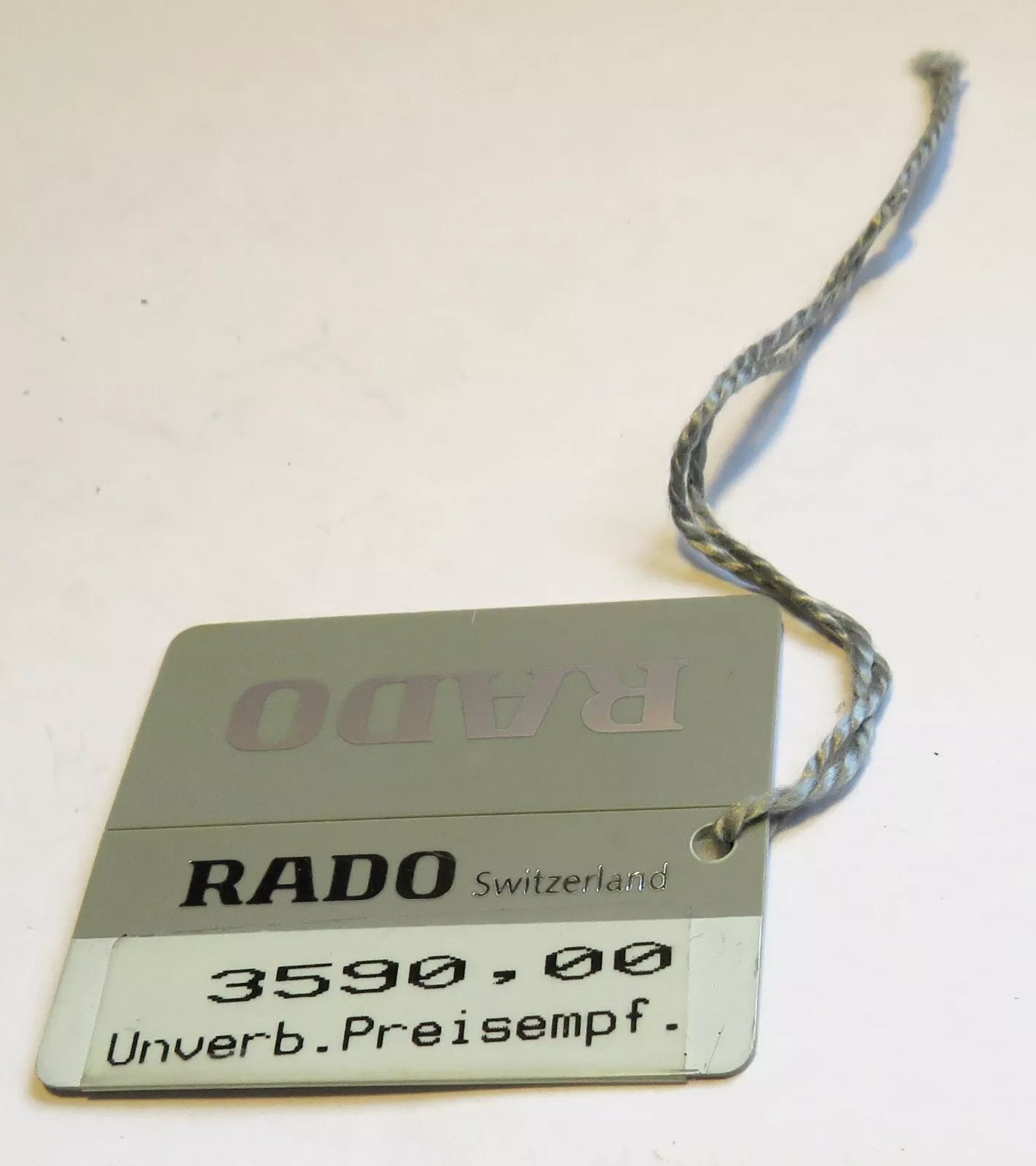Sammler-Uhren
Rado Diastar Ceramica HAU Steel Gold Quartz Fullset OVP 1,100 Euro Gold Value
Rado Diastar Ceramica HAU Steel Gold Quartz Fullset OVP 1,100 Euro Gold Value
Couldn't load pickup availability
Rado (watch brand)
| Rado Watches Ltd. [ | |
|---|---|
 |
|
| Legal form | stock corporation |
| Founding | 1917 (as Schlup & Co.) |
| seat | Lengnau BE , |
| Line | Adrian Bosshard (CEO) (as of July 1, 2020) |
| Number of employees | almost 500 (as of 2018) |
| Sales volume | almost 500 million euros (as of 2018) |
| Industry | watch industry |

Rado, a watch brand based in Lengnau in the Swiss canton of Bern , has been part of the Swatch Group since 1983 and produces watches in the upper price segment. Rado watches are available in over 5,000 retail outlets and over 70 stores. The brand is known for its research in materials science. Several hundred thousand watches were produced in 2018.
Company history
Rado was founded as Uhrwerkfabrik Schlup & Co. in 1917 in Lengnau by the brothers Ernst, Fritz and Werner Schlup and in the first decades operated exclusively as a producer of ebauches. In 1937, Rado Watch Co. Ltd. was founded as a subsidiary within the same company; another wristwatch brand produced by the Schlup watch factory from around the early 1940s to 1957 was Exacto . From around 1958, only watch models under the Rado name were offered. The DiaStar, developed in 1962, is considered the world's first scratch-resistant watch. From 1962 to 1968, the Captain Cook MK1 diver's watch with a depth resistance of 220 meters was produced in small quantities of just 8,000 pieces.
In 1968 the company became part of ASUAG . In 1975 the new Rado headquarters in Lengnau was inaugurated. In 1983 ASUAG and SSIH merged to form the SMH Group in Biel . This became the Swatch Group in 1998. In 1992 Rado celebrated a triple anniversary: 75 years since its original foundation, 35 years since the first official use of the Rado brand, and 30 years since the first launch of the DiaStar . In 1995 Rado was awarded the Swiss Technology Center's Innovation Prize for the development of Concept 1 , which was the first time polycrystalline diamond was used in watchmaking.
Materials
The unique selling point of Rado watches, in addition to their unusual design, is the scratch-resistant nature of their cases. The materials are supplied by the company's own manufacturer , Comadur in Le Locle . The Dia Star 1, produced in 1962, had a case made of tungsten carbide and sapphire crystal . In 1986, Rado presented the "Dia Star Integral," its first watch to contain components of a high-tech ceramic called Ceramos . Four years later, it introduced the Ceramica , the world's first watch with a bracelet, crown, and case made entirely of this material. It is five times harder than steel but a quarter lighter.
Rado uses the compound zirconium oxide , a synthetically produced, very fine powder which, through heat-induced shrinkage, enables extremely high density, in contrast to conventional ceramic, which is rather porous and fragile in its basic form. The material can absorb pigments and can therefore be colored in any color. In addition to the initially exclusively black ceramic, there is a wide spectrum of different colors. With its so-called plasma ceramic , Rado succeeded in giving its products a silvery shimmering, metallic appearance in a patented process. This is achieved by adding gases and heating them to 20,000 degrees. The material Ceramos, made of ceramic and metal, allows looks such as steel, platinum or rose gold. Many of the brand's models are additionally adorned with diamonds or gold and bear the name Jubilé .
The timepieces are mostly self-winding, while the very slim and women's models are equipped with quartz movements. The movements are made by ETA SA, a manufacturer affiliated with the Swatch Group. Designers of Rado watches include Andy Warhol , Jasper Morrison , Konstantin Grcic , and Samuel Amoia.
